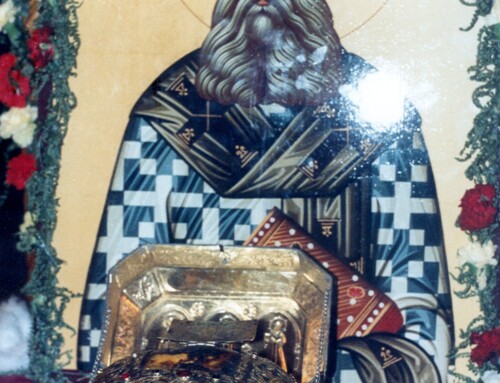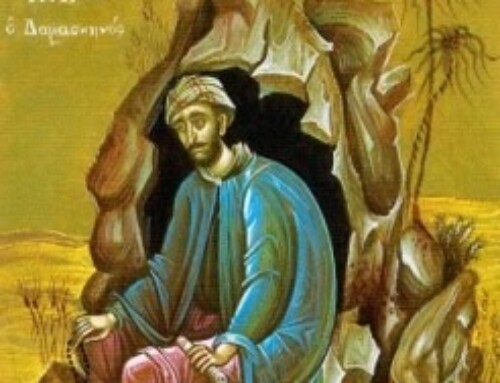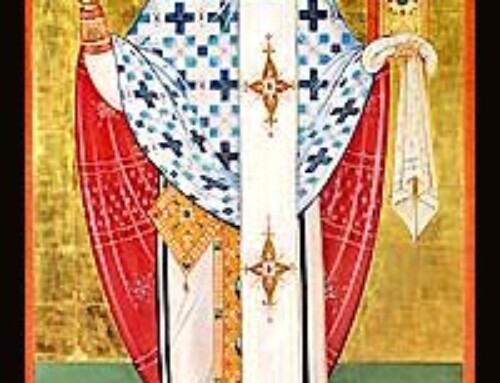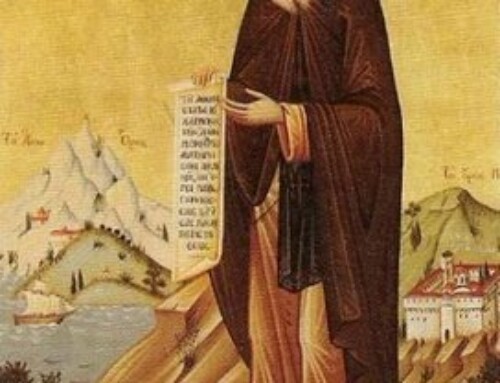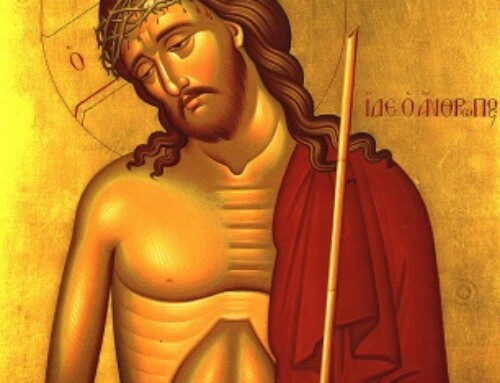Word Magazine November 1978 Page 42-43
AMERICAN ORTHODOX UNITY
By Elliott Wright
Religious News Service Correspondent
Brookline, Mass. — Theologians from the various ethnic divisions of Eastern Orthodox Christianity in the U.S. and Canada are of one mind in wanting a single, self-governing Church in America, according to the informal consensus at a landmark conference here.
But some theologians differ on how and when the goal can be achieved. Many look to a projected “Great and Holy Synod” of world Orthodoxy to overcome American Orthodox administrative disunity, caused in large part by historic ties to national “Mother Churches” in Eastern Europe and the Middle East.
The present and future situation of Orthodoxy in North America was a major topic at the first theological conference publicly to consider the announced agenda of the “Great Synod,” now in preparation but as yet unscheduled. (The last of seven councils recognized by Eastern Orthodoxy is the second Council of Nicea, which met in 787 and affirmed the veneration of icons as permissible for Christians.)
Held at Hellenic College-Holy Cross Greek Orthodox Seminary, the three-day meeting was the third international theological conference sponsored by the 10-year-old Orthodox Theological Society in America. It was attended by 110 persons, mostly from the U.S. and Canada. A number of speakers were from Europe.
The keynote speaker was Metropolitan Damaskinos, general secretary of the Secretariat on Preparations for the Great and Holy Synod and a Geneva-based prelate of the Orthodox Ecumenical Patriarchate of Constantinople (Istanbul). Metropolitan Damaskinos explained the planning process and offered reflections on the 10 Synod agenda items selected some months ago by representatives of 13 independent Orthodox patriarchates and Churches.
In an interview, Metropolitan Damaskinos said he was in Brookline to listen more than to speak. He added that one of his responsibilities as secretary of the planning unit was to hear the voices of the Orthodox leaders and people all over the world.
The need for a single, self-governing American Orthodox Church was the apparent assumption of every U.S. and Canadian theologian, clerical or lay, who read papers, responded to formal addresses, or spoke in open forums. There were no dissenting voices among participants, who came from seven overlapping Orthodox jurisdictions — Greek, Antiochian, Romanian, Serbian, Albanian, Carpatho-Russian, and the Orthodox Church in America, the former Russian Orthodox Greek Catholic Church of America.
“This is the first time American Orthodox theologians have made a unified presentation of the dilemma of American Orthodoxy to those who can do something about it,” said Father Benedict De Socio, a priest of the Orthodox Church in America.
By “those who can do something about it,” he meant the forthcoming Great Synod. The ten agenda items include the Orthodox “diaspora,” areas beyond traditionally Orthodox lands, such as Greece, Russia, Bulgaria, Romania, and parts of the Middle East.
The approximately 6 million Eastern Orthodox Christians in North America are administratively divided among more than two dozen jurisdictions. By far the largest are the Greek Orthodox Archdiocese, which is directly under the Ecumenical Patriarch of Constantinople, and the Orthodox Church in America, whose independence was recognized, by its “Mother Church,” the Orthodox Church of Russia, in 1970.
A proliferation of structures resulted with immigration from historic Orthodox countries in the 19th and early 20th century. While language and certain customs vary from group to group, all
canonical Orthodox Churches make the same confession of faith and use the same basic liturgy.
For the first ten centuries of Christianity, East and West were united. A schism finalized in the year 1054 separated Roman Catholicism (the West) from Eastern Orthodoxy. Unlike Catholicism, Orthodoxy has no centralized papacy. The Ecumenical Patriarch is “first among equals” in the world – hierarchy. As Orthodoxy spread, the administrative pattern developed was that of independent (autocephalous) national Churches. The overlapping jurisdictions in America are, therefore, considered irregular.
Father Demetrios I. Constantelos, a professor at Stockton State College in New Jersey and a priest of the Greek Archdiocese, outlined three alternatives the “Great Synod” has in responding to the American situation: 1) Do nothing, leaving the irregular status quo, 2) lay plans for one independent Orthodox Church in each country or continent, or 3) set up a loose confederation of American Orthodox Churches in relationship to the Ecumenical Patriarchate. He saw the third as the most feasible, while he acknowledged the second as the ideal.
Father De Socio and others disagreed with Father Constantelos, partly on the grounds that the Orthodox Church in America is already “autocephalous.” (The recognition of OCA independence by the Church of Russia was opposed by the Ecumenical Patriarchate, and this disagreement has added to intra-Orthodox tensions in America, but has not caused disruption of liturgical fellowship.)
Father John Meyendorff, one of the most prominent of contemporary Orthodox theologians and historians, gave a paper on the Ecumenical Patriarchate. The OCA priest and professor at St. Vladimir’s Theological Seminary, Crestwood, N.Y., said the Patriarch of Constantinople most certainly enjoys a form of primacy in world Orthodoxy. That primacy, he said, is moral and spiritual rather than jurisdictional.
While the Ecumenical Patriarch has taken the initiative in planning the “Great Synod,” the Church of Constantinople has for centuries been restricted by its presence in Turkey, a Muslim country whose government is not disposed to recognize the Patriarch as an international Christian leader.
Father Meyendorff proposed the formation within the Ecumenical Patriarchate of an international staff. He hoped that could be done in Turkey but, if not, he said, it would be better to transfer the patriarchate elsewhere.
The Third International Conference of Orthodox Theologians took note of some opposition to the convening of the “Great Synod,” although none of the speakers themselves questioned its value.
In light of widely publicized criticism of the Synod, especially in Europe, by one Father Justin
Popovich, a Serbian priest, Bishop Maximos, a prelate of the Greek Archdiocese on the faculty at Holy Cross, presented a defense.
The bishop strongly disagrees with Father Popovich and others who have said the Synod will not be free to express itself and have found the agenda artificial. Some critics are fearful that the Orthodox of the “diaspora” will not be adequately represented.
Planning for the Synod began in 1960 at a meeting on the island of Rhodes. Metropolitan Damaskinos explained that questions of time, place and exact composition have not been determined.
Plans for the Synod include the drafting of Orthodox consensus positions on the 10 agenda items prior to the meeting. Position papers are already being prepared by the various patriarchates and independent Churches. In addition to the “diaspora,” topics to be considered include the relations of Orthodoxy to other Christian churches, possible revision of the liturgical calendar, rules on fasting and the clergy and marriage (Orthodox clergy may today marry, but before ordination, while bishops are chosen from among the celibate clergy.)
Dr. James Counelis, a layman, made a strong appeal at the theological conference for serious attention to the voice of the laity. It is generally presumed that the council will be made up of bishops — either all Orthodox bishops or their representatives.
At a banquet marking the 10th anniversary of the Orthodox Theological Society in America, Metropolitan Philip Saliba, primate of the Antiochian Orthodox Christian Archdiocese of North America, said he found some Synod agenda items “irrelevant” to the American scene. He did not, for example, find it significant to decide, as proposed, which Orthodox patriarchate fits where in order of honor. Metropolitan Philip also hoped that the agenda will be enlarged or revamped to include such contemporary concerns as abortion and medical ethics.
Some speakers felt the agenda is large enough and is appropriate. The most debate centered on item 10, which deals with justice, peace and racial discrimination. Father Stanley S. Harakas, dean of Holy Cross, stressed that the ethical implications of the entire agenda should not be overlooked.
Papers from the conference will be published and forwarded to leaders of all Orthodox Churches throughout the world. The committee editing the papers will also draft a statement, to be considered at the next society meeting, summarizing the points of view expressed.
The Third International Conference of Orthodox Theologians was planned by a committee headed by the society president, Father George C. Papademetriou, a Greek Orthodox priest in
Lexington, Mass.

